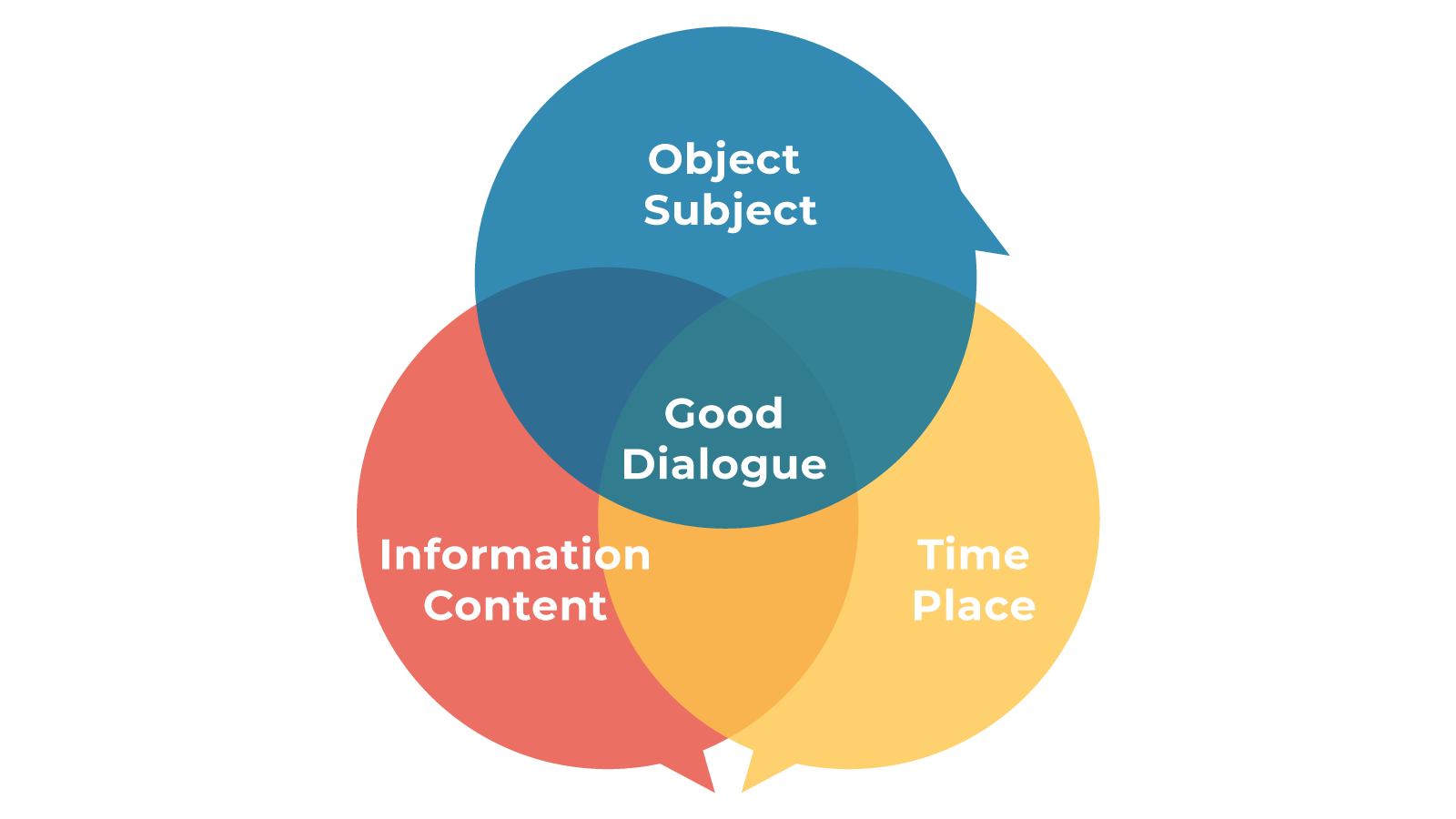Many readers will have experienced difficulties in countering disinformation when communicating with their close circle of family and friends, particularly when dialogue takes place over social media, within messaging apps, or around bustling dining room tables. Social norms and family structures can prevent us from speaking our mind, often because we fear to cause offense. When we do decide to speak out, the reaction is often disbelief or distress, and the dialogue breaks down. After all, no one likes to be told that information they believe to be true is actually false or misleading.
In the article below, we show how frequent dialogue can help make it easier to broach difficult subjects and counter disinformation with loved ones.
1. Elements of dialogue: Keeping the other person in mind
Major Elements of Dialogue
Object / subject : Background, personality, social milieu, values, degree of closeness of the relationship of the dialogue participants (incl. yourself)
Information / content : Content theme, information density, body language, emotional expression, and manner of interaction
Time / place : Temporal-spatial context, situation, communication channel, duration, frequency and number of conversations.
Before we address the specifics, it is worth taking a look at a definition of what constitutes a “good dialogue”, courtesy of Taiwanese NGO Chat for Taiwan. The point at which the three circles meet shows a good dialogue because the elements align across the people involved, the information they are exchanging, and the time and place. Taking this a step further, we can say that a good dialogue involves empathy, accommodation, and shared expectations – the closer you can come to understanding the person you are communicating with and aligning your expectations with theirs, the closer you will come to setting up opportunities to exchange ideas on a regular basis. Keep these goals uppermost in mind when you come to talk with those you care about.
Dialogue involving disinformation: Three things to remember
Keep a calm mindset : Understand that the dialogue should be sustained; do not be overly anxious to score points or to emerge victorious.
Collect information : Observe how the other person receives, digests and passes on information, as well as the motivation behind their actions.
Maintain a flexible approach : Depending on the setting in which the dialogue takes place, dynamically adjust your goals depending on the responses you receive, and formulate an appropriate course of action.
